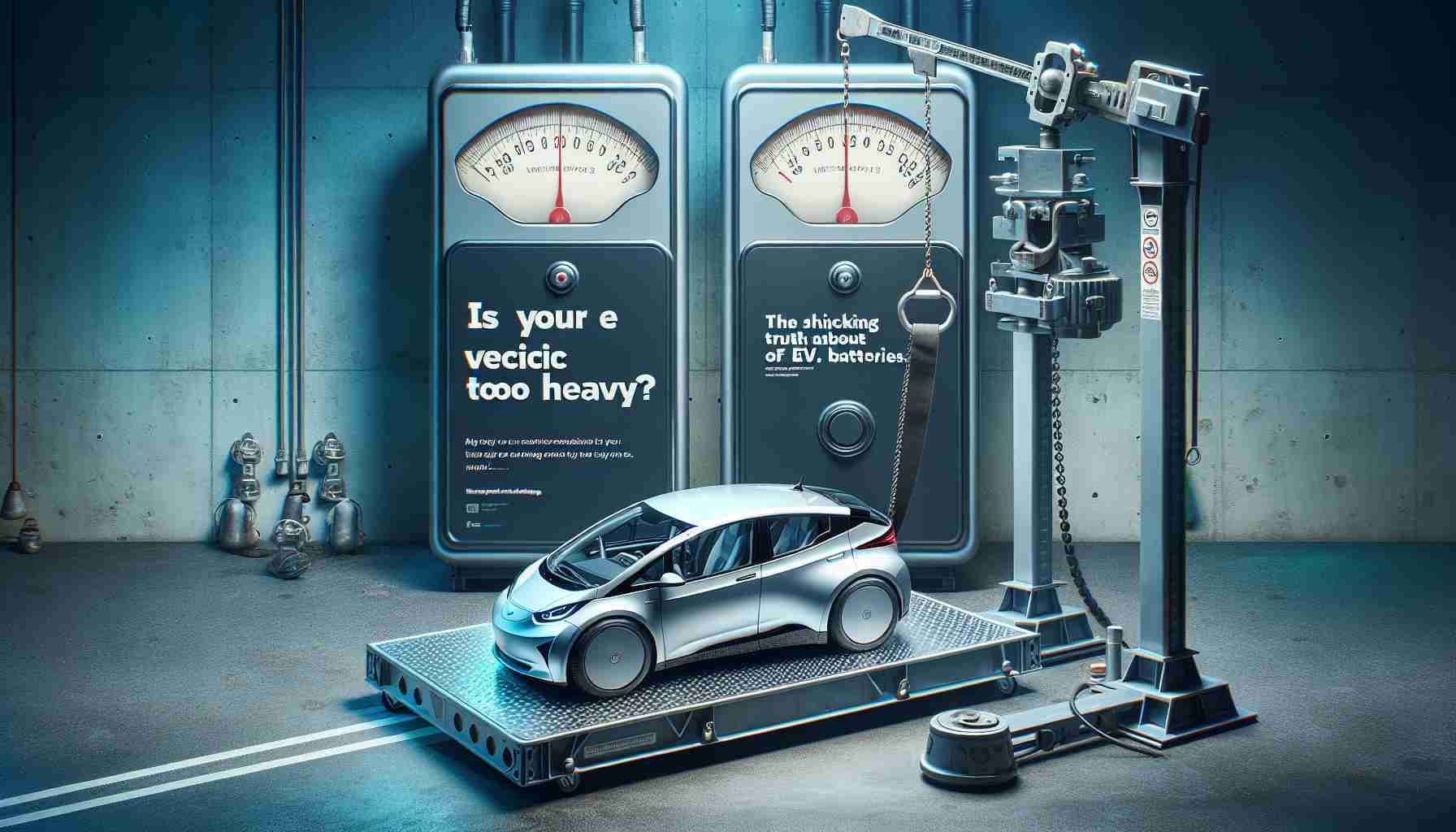- Electric vehicles (EVs) face significant weight challenges primarily due to heavy lithium-ion batteries, impacting range and efficiency.
- Heavier batteries necessitate larger sizes for extended distance, creating a cycle of increasing weight without proportional gains in range.
- Emerging technologies, such as solid-state batteries, offer the potential for lighter, more efficient energy storage, possibly increasing range by up to 60%.
- Innovative designs like cell-to-body batteries may allow batteries to contribute to vehicle structure, further reducing weight.
- The future of EVs looks promising as advancements may lead not only to improved performance but also to lighter, more efficient vehicles.
As electric vehicles (EVs) gain momentum on our roads, a startling issue lurks beneath their sleek designs: weight. Unlike the muscle cars of yesteryear that thrived on raw power, today’s battery-powered giants are struggling under their own heft. Think of them as needing a crash diet rather than an upgrade in horsepower.
The culprit? The massive weight of lithium-ion batteries. For instance, an 80 kWh battery can weigh nearly half a ton, significantly surpassing traditional gas-powered cars. This hefty load hampers range and efficiency, creating a vicious cycle: larger batteries for longer distances mean even more weight. In reality, some models, like GMC’s Hummer EV, possess enormous batteries yet provide little additional range, showcasing a glaring inefficiency.
The solution lies in enhancing battery efficiency. New technologies like solid-state batteries promise to pack more energy into a lighter frame, potentially boosting range by up to 60% without added weight. Imagine driving your EV for hundreds of kilometers without the burden of frequent charging!
Moreover, innovations like cell-to-body batteries could revolutionize vehicle design, allowing the battery to serve as both energy source and structural support, effectively shedding unnecessary weight.
As automakers pursue these groundbreaking advancements, the future of EVs shines brighter than ever. The key takeaway? The next generation of electric vehicles might not just be faster and more powerful—they could finally be light on their feet, transforming how we think about sustainable driving. Strap in; the revolution is coming!
Breaking Through the Weight Barrier: The Future of Electric Vehicles
Understanding the Current Challenges of EV Weight
As the electric vehicle (EV) market expands, one critical issue remains at the forefront: the weight of these vehicles. The weight stems primarily from lithium-ion batteries, which can add substantial heft, making even top-performing models less efficient. An 80 kWh battery, for instance, can weigh around 1,000 pounds, making it significantly heavier than conventional automotive engines. This added weight can curtail range and overall efficiency, compelling manufacturers to innovate and address these challenges.
Market Innovations and Future Prospects
Exciting developments are underway that promise to reshape the landscape of electric vehicles. Let’s delve into some cutting-edge innovations:
– Solid-State Batteries: These new battery technologies hold the potential to increase energy density significantly—by as much as 60%—without adding weight, thus extending the driving range of EVs.
– Cell-to-Body Batteries: This design reimagines how batteries are integrated into the vehicle structure. By using the battery as part of the vehicle’s frame, manufacturers can eliminate unnecessary weight while enhancing structural integrity.
– Lightweight Materials: The use of advanced materials, such as carbon fiber and aluminum alloys, in vehicle construction can also help offset the weight issue.
Pros and Cons of Current EV Technologies
Pros:
– Enhanced range and efficiency with new battery technologies.
– Potential reduction in manufacturing costs as innovations mature.
– Greater adoption of EVs due to improved performance metrics.
Cons:
– High costs associated with developing solid-state batteries.
– Manufacturing complexities with new materials could delay widespread implementation.
– Market readiness for these innovations remains uncertain.
Predictions for the EV Market
Industry analysts forecast that by 2030, the efficiency and energy density of EV batteries will substantially improve, making electric vehicles more competitive with traditional gasoline vehicles in terms of both performance and cost. The transition to lighter, more efficient vehicles could also encourage broader consumer acceptance and usage.
Key Insights and Future Trends
As we look ahead, several trends are emerging within the EV market:
– Increased focus on sustainability: Manufacturers are increasingly looking for ways to minimize waste and improve recyclability.
– Government policies favoring innovation: Many regions are implementing strict regulations supporting the shift to more sustainable vehicle technologies.
– Consumer demand for performance: As EV technology matures, customers are demanding not just environmentally friendly vehicles but also high performance and low weight.
FAQs About Electric Vehicle Development
1. What role do solid-state batteries play in reducing EV weight?
Solid-state batteries are lighter than traditional lithium-ion batteries while providing a higher energy density, thus potentially extending the range of EVs without increasing weight.
2. How are manufacturers handling the limitations of current battery technologies?
Manufacturers are exploring alternative battery chemistries and lightweight materials, alongside innovating new battery designs such as cell-to-body configurations.
3. What impact will lightweight vehicles have on the environment?
Lighter vehicles can lead to greater energy efficiency and lower emissions throughout their lifecycle, thus contributing positively to environmental sustainability.
For further insights and market analysis on electric vehicles, visit automotive.com.



















